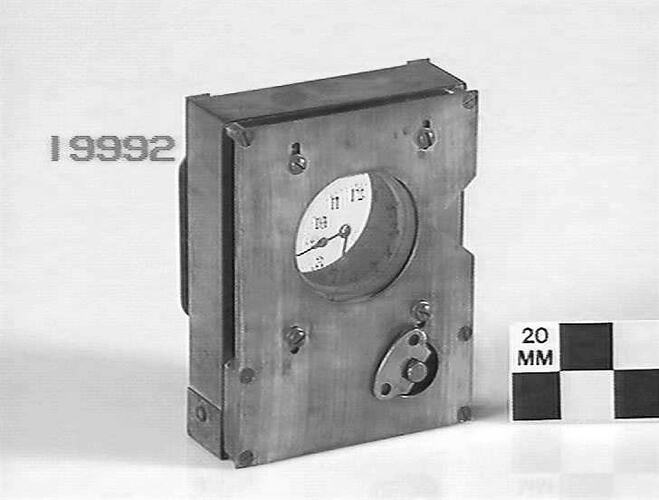Summary
Mystery clock in a rectangular brass case, made in England, circa 1900.
The clock is designed to be inserted into a magic lantern or projector so that the hands, dial and an advertisement are projected on the screen. The hands are moved by gear wheels on the outer end of the hands, so that no mechanism is visible in the projection. Also called an advertising clock.
Mystery clocks first appeared in Europe in the 19th century. They are named as such due to their mechanism not being clearly visible, the clock or watchface, often being transparent. The secret to the mystery clock is due to a fine craftsperson cleverly concealing the mechanism within the frame or border of the timepiece. There are also examples where a clear mechanism is used in the clockface which at first is not easily detected.
Physical Description
Rectangular brass case. Glass dial has ornate black arabic numerals. Outer ends of hands are attached to gear wheels that rotate. Spring wound; lever escapement.
More Information
-
Collecting Areas
-
Acquisition Information
Loan & Subsequent Bequest from Mr John Askew, 29 Jul 1936
-
Inscriptions
Brass case marked '163' on back.
-
Classification
-
Category
-
Discipline
-
Type of item
-
Overall Dimensions
10 cm (Length), 5 cm (Width), 14 cm (Height)
-
Keywords

